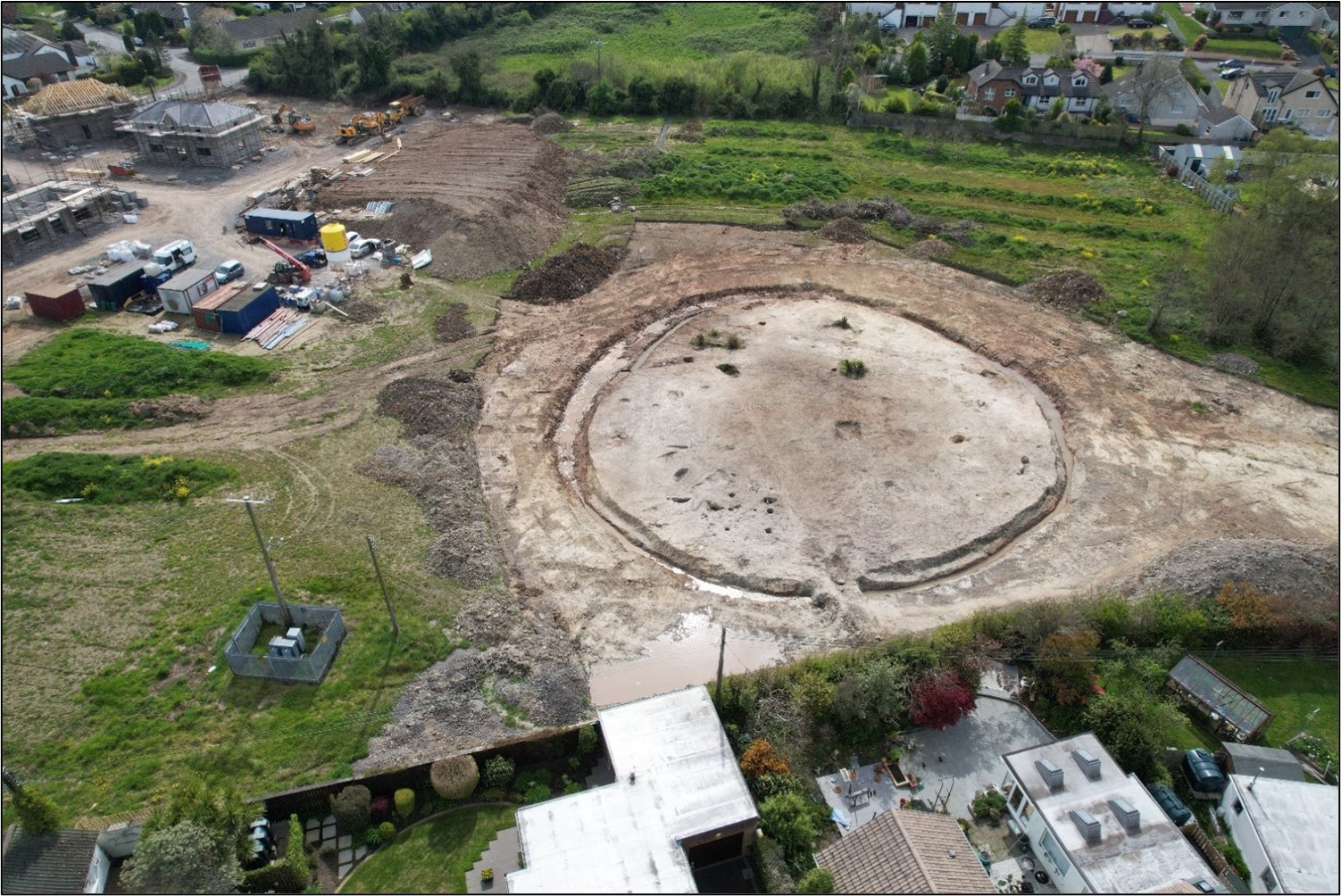2022:829 - KILLINCHY: Whiterock Road, Down
County: Down
Site name: KILLINCHY: Whiterock Road
Sites and Monuments Record No.: DOW017:024
Licence number: AE/21/076
Author: Joe Miller
Author/Organisation Address: NAC Ltd, Farset Enterprise Park, 638 Springfield Road, Belfast, BT12 7DY
Site type: Enclosure
Period/Dating: Early Medieval (AD 400-AD 1099)
ITM: E 752255m, N 861776m
Latitude, Longitude (decimal degrees): 54.481575, -5.650350
The excavation at Whiterock road, Killinchy uncovered evidence of human occupation and activity within the site dating from the Late Mesolithic until the early medieval period. Archaeology uncovered included Late Mesolithic and Neolithic flint assemblages, a Late Mesolithic chipped flint axe, a Middle Neolithic pit dated to 3516–3368 BC, the remains of a burnt mound and associated trough dated to the Middle Bronze Age (1772–1613 BC and 1644–1529 BC) and two Iron Age pits dated to 545–396 BC and 364–152 BC.
The predominant archaeology on the site was the remains of an early medieval sub-circular enclosure approximately 42m in diameter. This was demarcated by a ditch, around 2m wide and 1m deep, enclosing an area around 38m in dimeter. The ditch had been re-cut during modern drainage works. This work had resulted in sections of the enclosure ditch’s original stratigraphy being destroyed, so much so that in places the ditch was only identifiable due to the presence of the drainage stones. Nevertheless, several large sections of the ditch remained undisturbed. The north-western section remained relatively intact, where the recut was only 0.5m deep and therefore did not impact on the lower archaeological strata. Charcoal from the aforementioned strata was dated to 2137–1937 BC and 353–106 BC, however this is believed to be residual and associated with earlier prehistoric activity at the site. At the south-eastern quadrant a large section of the ditch survived. Here secure archaeological deposits from the base of the ditch returned two dates from the mid-6th to 7th centuries, thereby placing the monuments’ construction at the start of the early medieval period. Within the ditch finds included animal bone (cattle, sheep/goat, horse and pig), iron slag and Souterrain Ware pottery. At the easternmost terminus of the ditch, an assemblage of Souterrain Ware pottery fragments were recovered, comprising approximately 60% of a small souterrain ware cup.
The entrance to the enclosure was on the northern side facing the shoreline were a narrow causeway around 2m wide allowed access to the interior of the monument. Within the interior two structures were identified, a rectangular building marked by six post-holes and a series of curvilinear gullies thought to demarcate an outside screen. Two post-holes and a pit from the rectangular structure were dated to AD 542–640, AD 549–641 and AD 536–606 respectively, whilst the largest curvilinear gully was dated to AD 668–775. Iron slag and fired/vitrified clay kiln lining was recovered from the curvilinear gully and enclosure ditch. This is indicative of localised metalworking taking place at the site. In addition, recorded as a surface find was a fragment of a bronze enamelled buckle of Insular design. Buckles of this type are dated to between the 7th and 8th centuries, would have been a high-status item, and would have been the product of a skilled metalworker. To date only thirteen buckles (fragments or complete) have been found within the British Isles.
A large occupation spread, located within the south-eastern quadrant of the enclosure, that ran into the enclosure ditch, was stratigraphically dated to the early medieval period. Twelve other pits were also excavated and recorded within the interior of the enclosure, some of these may be early medieval in date, whilst others could be prehistoric in origin.
It cannot be determined if the enclosure is of an ecclesiastical or secular nature. The size and shape of the ditch, together with its setting close to the shoreline have determined that the enclosure is not a rath. It may, however, be a small ecclesiastical settlement, possibly associated with the nearby monastic community at Nendrum, or it could be a small naval or military base associated with the kingdom of the Ulaid. Alternatively, it is simply a secular site with no ecclesiastical or military connotations.

